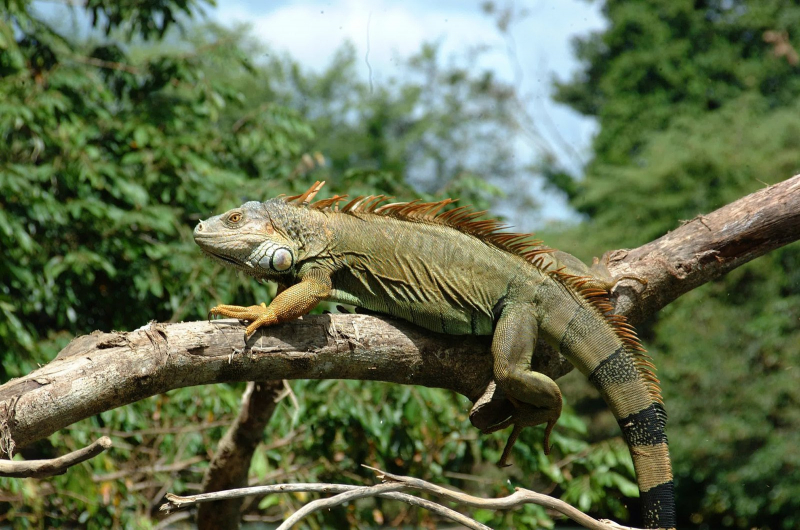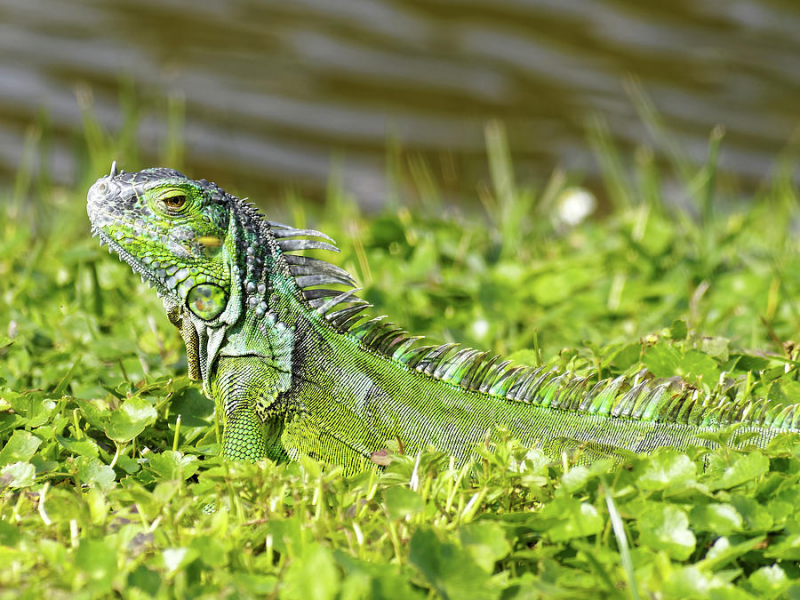They have many ways to avoid predators
Iguanas utilize their long tails for balance while climbing and moving around, but they also use them for self-defense. Iguanas will whip their tails to confuse and disorient potential assailants when they come upon a predator or other hazard. When necessary, iguanas may separate their tail from their body. This could occur if they are trodden on, become caught, or get pulled up by their tail. Iguanas can perhaps avoid predators thanks to this survival strategy. When this happens, the tail naturally fractures apart from the body along a line, continuing to move independently of the body, likely to confuse the predator and enable the lizard to flee. In roughly a year, their tails can regrow. After the lizard has exhausted others, this defense is frequently adopted as a final option.
Iguanas inhabit the tops of forest trees. Iguanas in their adult stages live higher up, while juveniles live below. They may readily get sun exposure since they live high in the forest canopy. Except for laying eggs, they seldom ever descend to the forest floor. Although they like woods, iguanas may thrive in open spaces as well. They will dive below the water's surface when near water to avoid predators.
Due to their color, which frequently enables them to blend in with the surroundings and aids in their evasion of predators, these reptiles can be challenging to see. They often freeze when scared, thereby blending into their surroundings, or they run away. Many iguana species have few natural predators, but if one does try to eat iguanas, the spiky spinal combs will make it difficult for the animal to swallow the food. Iguana males engage aggressively toward other males and over basking areas to attract females. Rarely do two people of different sizes engage in physical combat. When conflicts do happen, they may cause serious harm to both parties.











